From the vast expanse of the night sky, humans have long been captivated by the shimmering stars and the fascinating constellations they form. Throughout history, the perception and understanding of these celestial patterns have evolved and shifted, influenced by cultural beliefs, scientific advancements, and the changing perspectives of different civilizations. The study of how constellations have transformed over time unveils an intricate interplay between ancient observations, mythology, astronomy, and cultural diversity. Delving into the rich tapestry of human history, this article explores the early human observations of the stars, the role of constellations in ancient mythology, the impact of astronomy on modern constellations, the changes in constellation boundaries, and the global perspectives that shape our understanding of these celestial wonders.
Contents
- Early Human Observations
- Role in Ancient Mythology
- Astronomy and Modern Constellations
- Changes in Constellation Boundaries
- Global Perspectives on Constellations
- Conclusion
-
Frequently Asked Questions
- 1. How did early civilizations navigate using the constellations?
- 2. Were all constellations recognized by ancient societies?
- 3. Did ancient astronomers discover the movement of planets?
- 4. How did ancient civilizations explain the origin of constellations?
- 5. Were constellations only important for religious or mythological reasons?
- 6. Did ancient societies have a unified system for naming constellations?
- 7. How did ancient astronomers make accurate measurements without modern instruments?
- 8. What role did astrology play in early civilizations’ understanding of constellations?
- 9. Did ancient civilizations have knowledge of comets and asteroids?
- 10. How did the cultural diversity of ancient civilizations influence their perception of constellations?
- References
-
Frequently Asked Questions
- Can constellations be seen from all parts of the world?
- Do constellations have the same meaning in all cultures?
- What is the significance of constellations in ancient mythology?
- How have constellations changed over time?
- What is the role of the International Astronomical Union in defining constellations?
- What is the Ophiuchus controversy?
- Are there constellations specific to Chinese and Indian cultures?
- Do different cultures recognize the same constellations?
- What is the precession of Earth’s axis and its impact on constellations?
- Are there indigenous constellations recognized by native cultures?
- References
- Read More
Early Human Observations

Human observations of the stars date back thousands of years, serving as a fundamental basis for our understanding of constellations. Early civilizations, such as those in Ancient Mesopotamia, Ancient Egypt, and Ancient Greece, made significant contributions to this field.
Ancient Mesopotamia
In Ancient Mesopotamia, the night sky held great importance in their religious and agricultural practices. Mesopotamian astronomers meticulously recorded celestial movements and their interpretations of the stars. They were the first to establish a systematic approach to mapping the night sky, identifying constellations like Orion and Ursa Major. These observations were crucial for predicting seasonal changes, navigating trade routes, and forming the basis of astrology.
Ancient Egypt
In Ancient Egypt, the motion of the stars was tied to their belief in an afterlife and the eternal journey of the Pharaohs. The Egyptians developed elaborate rituals and architectural structures, such as the alignment of the pyramids with Orion’s Belt, to reflect their cosmological beliefs. They particularly focused on Sirius, the brightest star in the night sky, which marked the beginning of the Nile flood, a vital event for their agricultural calendar.
Ancient Greece
The ancient Greeks inherited much of their astronomical knowledge from earlier civilizations but also made significant advancements. Prominent Greek astronomers, such as Thales, Pythagoras, and Heraclides, observed the stars and classified them based on their brightness. These early Greek astronomers were fascinated by the heavenly bodies and were among the first to propose that planets and stars orbited the Earth.
Ancient observations laid the foundation for scientific knowledge about the stars and constellations. They paved the way for future developments in astronomy, leading to a deeper understanding of the cosmos. To explore more about the scientific knowledge of ancient astronomers, click here (source).
Ancient Mesopotamia
The ancient civilization of Mesopotamia, located in modern-day Iraq, made significant contributions to the study of the stars and constellations. They were among the first to develop a systematic approach to understanding the night sky.
Mesopotamian astronomers meticulously recorded celestial movements and created intricate star catalogs. One of the earliest known examples is the Mul.Apin, a series of clay tablets that cataloged the positions of various stars and constellations. These observations were crucial for predicting seasonal changes and helping with agricultural practices.
Mesopotamian astronomers divided the night sky into various constellations, each representing a specific deity, mythological figure, or significant event. For example, they associated the constellation Taurus with the Bull of Heaven and believed it symbolized the power of the gods.
Their observations also led to the development of astrology, where they believed that the positions of the stars at the time of a person’s birth could influence their destiny. This belief in celestial divination influenced not only Mesopotamia but also later civilizations.
The legacy of ancient Mesopotamian astronomy and their understanding of constellations continued to influence subsequent civilizations, including the Greeks and Egyptians. Their observations and cataloging methods laid the foundation for future astronomical advancements. To learn more about the differences between asteroids and comets, click here (source).
Ancient Egypt
Ancient Egypt had a profound connection with the night sky, intertwining their religious beliefs and astronomical observations. The Egyptians considered the stars as deities and incorporated them into their cosmology. The pharaohs, who were believed to become stars in the afterlife, had a special significance in Egyptian astronomy.
The Egyptians closely observed the movements of celestial bodies, marking and predicting important events such as the annual flooding of the Nile River. One of the most recognizable constellations in Egyptian culture is Orion, which was associated with the god Osiris, the deity of rebirth and regeneration. They believed that the resurrection of Osiris occurred at the same time as the annual reappearance of Orion in the night sky.
Another significant stellar phenomenon for the Egyptians was the star Sirius, also known as the Dog Star. Sirius’s heliacal rising, when it became visible just before dawn after a period of being hidden by the sun’s glare, coincided with the beginning of the Nile flood. This event was crucial for Egyptian agriculture as it signaled the fertile soil for a bountiful harvest.
To discover tips on how to spot the elusive zodiac constellation Ophiuchus, which also has connections to ancient astronomy, click here (source). The intricate intertwining of Egyptian mythology, religious beliefs, and astronomical observations has left a lasting legacy on our understanding of the night sky.
Ancient Greece
The ancient Greeks made significant contributions to the realm of astronomy, building upon the knowledge of earlier civilizations. Greek astronomers, including notable figures like Hipparchus and Ptolemy, played a crucial role in shaping our understanding of the constellations.
The Greeks believed that the gods and goddesses resided in the heavens, and the arrangement of the constellations held great significance in their mythology. The twelve constellations that make up the zodiac were particularly influential in Greek culture. These constellations, including Aries, Taurus, and Gemini, were associated with different gods and represented various personality traits and astrological phenomena.
The great mathematician and astronomer Claudius Ptolemy, who lived in Alexandria during the 2nd century CE, compiled and documented much of the Greek knowledge on astronomy and constellations in his book called the “Almagest.” Ptolemy’s work was instrumental in establishing the geocentric model of the universe, which positioned the Earth at the center with the planets and stars revolving around it.
It is worth noting that although the Greeks made remarkable advancements in astronomy, they still operated from a geocentric perspective, believing that the Earth held a central position in the cosmos. This belief held sway for centuries until the heliocentric model proposed by Nicolaus Copernicus in the 16th century challenged and eventually replaced the geocentric view.
The contributions of ancient Greece to the realm of constellations and astronomy cannot be understated. Their understanding and classification of the stars laid the groundwork for future astronomical discoveries and the development of new theories. To learn more about the dazzling constellation of Ophiuchus and tips for spotting this elusive Zodiac constellation, click here (source).
Role in Ancient Mythology
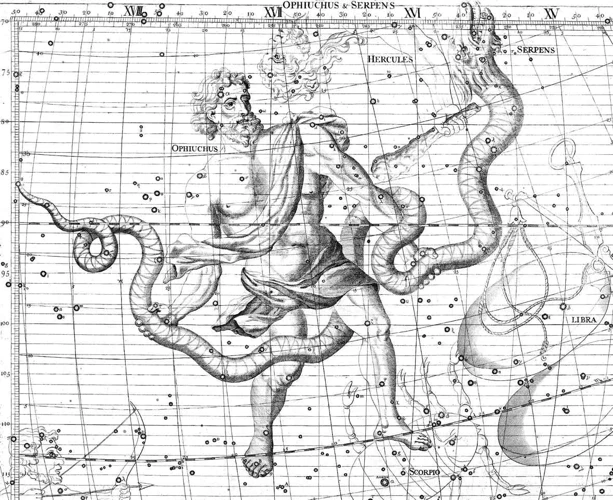
Greek Mythology and the Zodiac
Ancient mythology played a significant role in shaping the interpretation of constellations. Greek mythology, in particular, intertwines with the constellations we recognize today. The twelve constellations of the zodiac, which form a belt around the sky, were associated with various mythological figures. For instance, Aries represented the ram that saved Phrixus and Helle, while Leo was associated with the Nemean Lion slain by Heracles. These mythological stories not only provided cultural significance but also served as mnemonic devices for remembering the positions of the constellations.
Other Mythological Associations
While Greek mythology heavily influenced the West, other ancient civilizations also developed unique mythological associations with the stars. In Norse mythology, the constellation Orion was associated with the god Odin, while the Pleiades represented the seven sisters. Chinese mythology, on the other hand, assigned different constellations to their historical and mythical figures. Each culture crafted their own narratives to explain the origins and movements of the celestial bodies, creating a diverse tapestry of mythological associations across the world.
The intertwining of ancient mythology with constellations further deepened the cultural and symbolic significance of these celestial patterns. These mythological associations continue to influence our perception of the stars and serve as reminders of humanity’s rich storytelling traditions and cultural heritage.
Greek Mythology and the Zodiac
Greek mythology has had a profound influence on the development and interpretation of constellations, particularly through its connection to the zodiac. The zodiac derives its name from the Greek term “zōidiakos kyklos,” meaning “circle of animals.” This circle consists of twelve constellations that lie along the ecliptic, which is the apparent path of the Sun across the sky throughout the year.
The Greek mythological narratives associated with each zodiac constellation have added depth and symbolism to our understanding. For example, Aries, the ram, represents the Golden Fleece sought by Jason and the Argonauts. Taurus, the bull, is associated with the god Zeus, who transformed himself into a bull to carry away the Phoenician princess Europa. Gemini represents the twins Castor and Pollux, known as the Dioscuri, while Cancer is seen as the giant crab sent by the goddess Hera to hinder the hero Heracles during his battle with the Hydra.
The zodiac’s significance extended beyond storytelling, influencing the concepts of astrology and horoscopes. Greek philosophers and astrologers believed that the alignment of the stars and planets at an individual’s birth influenced their personality traits and destiny. This belief system gained popularity and continues to be followed by many people today.
The connection between Greek mythology and the zodiac remains ingrained in our cultural consciousness. It serves as a reminder of the enduring impact that ancient civilizations had on our understanding and interpretation of the stars. For aspiring stargazers, one might find it fascinating to explore the night sky and try to spot the elusive constellation Ophiuchus. To learn more about this intriguing zodiac constellation, click here (source).
Other Mythological Associations
While Greek mythology has heavily influenced our understanding of constellations, various other ancient civilizations also had their own mythological associations with the stars.
- The Norse mythology of Scandinavia featured constellations like Ursa Major, known as “The Great Bear,” which was believed to be the representation of the god Odin’s hunting dogs.
- In Hindu mythology, the constellation Orion is associated with the story of Prajapati, a god who created the universe.
- Chinese mythology has its own set of constellations, such as the Altair and Vega stars, which are part of the poignant love story of the Cowherd and Weaver Girl.
- Indigenous cultures around the world have their own unique stories and interpretations of the stars. For example, the Anishinaabe people of North America see the constellation known as the Big Dipper as the Fisher, an important character in their creation stories.
- The ancient Australian Aboriginal culture holds rich astronomical knowledge. They associate stars with Dreamtime stories, connecting their spiritual beliefs to the celestial realm.
These diverse mythological associations highlight the universal fascination with the stars and how different cultures have found their own narratives to explain the celestial wonders above.
Astronomy and Modern Constellations
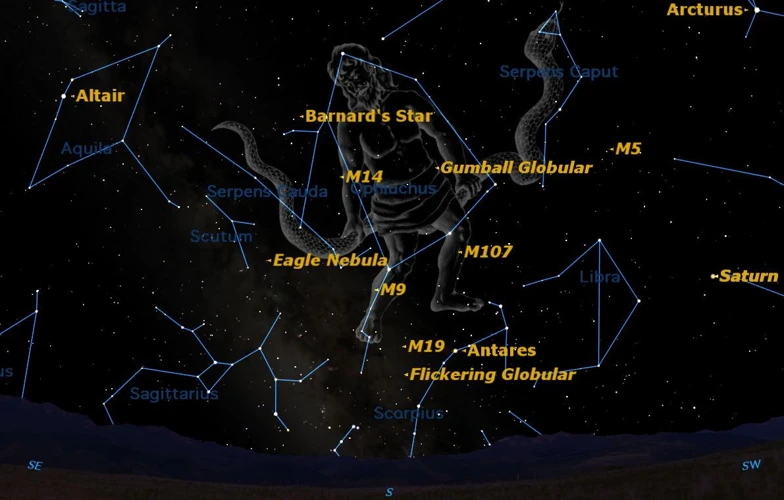
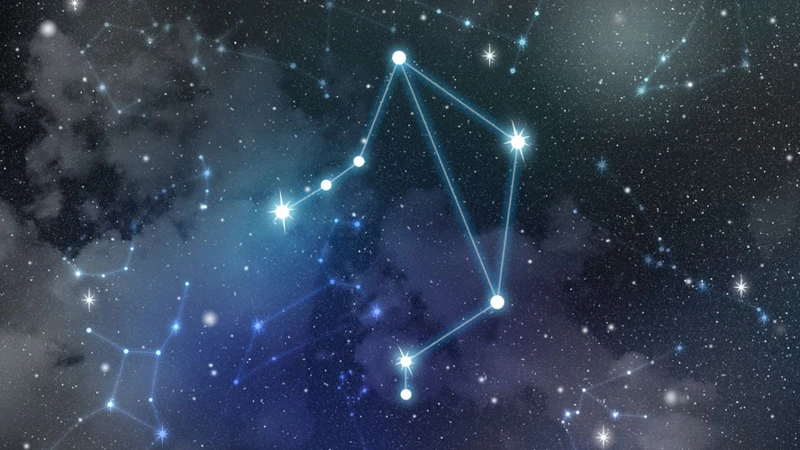
Over time, advancements in the field of astronomy and the contributions of influential figures have shaped our modern understanding of constellations. Two key factors that have influenced the development of modern constellations are the work of Ptolemy and the establishment of the International Astronomical Union (IAU).
The Influence of Ptolemy
Ptolemy, a Greek astronomer, mathematician, and geographer who lived in the second century AD, made substantial contributions to astronomy. His work “Almagest” became a pivotal text in the field for centuries. Ptolemy’s geocentric model of the universe, which placed the Earth at the center with all celestial bodies orbiting around it, greatly influenced the understanding of constellations during the Middle Ages and Renaissance. His extensive catalog of stars, known as the Ptolemaic constellations, included 48 constellations that were widely accepted and used for centuries.
The International Astronomical Union
The International Astronomical Union (IAU) was established in 1919 and plays a vital role in the modern understanding and classification of constellations. The IAU is responsible for defining and naming celestial objects, including constellations. In 1930, the IAU officially adopted a modern set of constellation boundaries based on celestial coordinates. These boundaries, known as the International Celestial Reference System (ICRS), provide a standardized framework for astronomers around the world to identify and locate specific celestial objects.
To this day, the IAU continues to maintain and update the official list of recognized constellations, ensuring consistency and accuracy in the field of astronomy. This collaborative effort has allowed astronomers to communicate and conduct research effectively, fostering a global understanding of the celestial sphere.
Astronomy has played a significant role in shaping our modern understanding of constellations. Ptolemy’s work laid the foundation for the categorization of constellations, while the IAU has provided a universal framework for their recognition and study. As our knowledge of the universe continues to expand, further advancements in astronomy will undoubtedly contribute to the evolution of our understanding of constellations.
The Influence of Ptolemy
The influence of Ptolemy, the renowned Greek astronomer and mathematician, had a profound impact on the development of constellations and our understanding of the night sky. Ptolemy’s work, specifically his treatise known as the “Almagest,” provided a comprehensive and influential model of the cosmos.
Ptolemy’s geocentric model of the universe proposed that the Earth was at the center, with celestial bodies orbiting around it. This concept dominated Western astronomy for nearly 1,500 years. In the Almagest, Ptolemy documented a catalog of 48 constellations, which became the standard for Western astronomy until modern times.
Ptolemy’s work not only presented the positions and names of the constellations but also included invaluable information on their mythology and associated legends. His work not only established the foundation for modern astronomy but also ensured the enduring significance of constellations in popular culture.
It is important to note that Ptolemy’s model eventually gave way to the heliocentric model proposed by Nicolaus Copernicus and later confirmed by Galileo Galilei’s telescopic observations. Nevertheless, Ptolemy’s research and treatise played a crucial role in the development of astronomy, and many of the constellations he identified continue to be recognized and studied today.
The International Astronomical Union
The International Astronomical Union (IAU) is an organization comprising professional astronomers from around the world. Established in 1919, the IAU plays a crucial role in modern astronomy, including the classification and naming of celestial objects, including constellations. Here are some key points about the IAU:
1. Naming of Constellations: The IAU is responsible for officially designating and naming constellations. They have defined the boundaries of 88 constellations that divide the entire celestial sphere. These boundaries help astronomers and stargazers locate and identify specific regions of the sky.
2. Updating Constellation Boundaries: Over the years, the IAU has adjusted the boundaries of constellations to reflect updated scientific knowledge. For example, in 1922, they revised the boundaries of the constellation Orion, making it more aligned with the star formations within it. These updates ensure accuracy and consistency in identifying celestial objects.
3. Standardizing Nomenclature: The IAU has established guidelines for naming celestial objects, including stars, planets, and dwarf planets. They also have a specific protocol for naming features on the Moon, Mars, and other planets in our solar system. This standardization helps streamline communication among astronomers and ensures clarity in scientific research.
4. Public Outreach and Education: The IAU is committed to promoting astronomy and sharing scientific knowledge with the public. They organize international conferences, workshops, and public events to foster collaboration, exchange ideas, and raise awareness about the universe. Their efforts aim to inspire a fascination for astronomy and encourage the next generation of scientists.
The International Astronomical Union plays a vital role in defining, naming, and advancing our understanding of constellations and other celestial objects. Through their work, they help create a unified framework for studying and appreciating the wonders of the night sky.
Changes in Constellation Boundaries
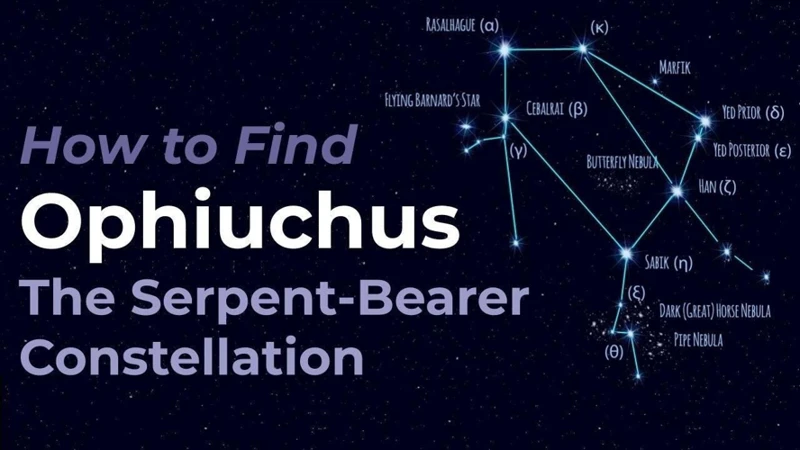
The Precession of Earth’s Axis
One of the fascinating aspects of constellations is that their boundaries have not remained fixed throughout history. The primary factor contributing to this phenomenon is the precession of Earth’s axis. This gradual wobbling motion causes a shift in the orientation of Earth’s axis over a period of approximately 26,000 years. As a result, the positions of stars and constellations appear to change slowly over time. This precession has led to a phenomenon known as axial precession, where the North Celestial Pole moves in a circular path among the stars. Consequently, the constellations we see today differ from those observed by ancient civilizations.
The Ophiuchus Controversy
The constellations we recognize today were standardized by a Greek astronomer named Claudius Ptolemy in the 2nd century AD. However, Ptolemy’s system did not account for the full extent of the sky. In recent times, the inclusion of the constellation Ophiuchus has sparked controversy. Ophiuchus is situated on the ecliptic, a path followed by the Sun, Moon, and planets. According to modern astronomers, the Sun spends about 18 days passing through this area, which falls between Scorpius and Sagittarius. This has led to discussions about whether Ophiuchus should be recognized as the thirteenth zodiac sign, disrupting the twelve-sign zodiac system that has been widely accepted for centuries. To learn more about Ophiuchus and how to spot this elusive constellation, click here (source).
The changes in constellation boundaries exemplify how our understanding of the night sky continues to evolve. Through scientific progress and advancements in technology, astronomers gain new insights into the celestial wonders above us, offering a deeper appreciation for the ever-changing nature of constellations.
The Precession of Earth’s Axis
The Precession of Earth’s Axis is a phenomenon that has played a significant role in shaping the constellations as we know them today. It refers to the slow, continuous change in the orientation of the Earth’s rotational axis over a period of approximately 26,000 years. As a result of this precession, the positions of the stars and constellations appear to shift gradually over time.
This phenomenon occurs because of the gravitational interactions between the Earth, Moon, and Sun. The Earth’s equatorial axis experiences a slight wobble, much like a spinning top, causing it to trace out a circle in the sky. This movement affects the alignment of the celestial pole with respect to the stars, resulting in changes to the appearance of the constellations.
Over several millennia, the precession has led to noticeable shifts in the positions of the constellations relative to the equinoxes. For example, the star Thuban in the constellation Draco was the North Star around 4,500 years ago, while today, Polaris in the constellation Ursa Minor serves as the guiding star. As a result, the boundaries and alignments of constellations have needed to be adjusted to account for this celestial drift.
The precession of the Earth’s axis has had a profound impact on our understanding and interpretation of constellations. It reminds us of the dynamic and ever-changing nature of our universe and highlights the need for periodic updates and revisions in astronomical charts and systems.
The Ophiuchus Controversy
The emergence of the Ophiuchus controversy in the realm of constellations has sparked debates among astronomers and astrology enthusiasts. Ophiuchus, also known as the Serpent Bearer, is a constellation located along the celestial equator. However, it is not one of the twelve zodiac constellations traditionally recognized in Western astrology.
This controversy stems from a widespread misconception that the zodiac should encompass thirteen equal divisions, representing each month of the year. In reality, the twelve zodiac signs originated from the ancient Babylonians, who developed the concept based on the position of the sun relative to specific constellations throughout the year. The Babylonians, for simplicity and ease of calendrical purposes, excluded Ophiuchus from the zodiac.
Nevertheless, Ophiuchus gained attention in 2011 when a rumor circulated that NASA had changed or added the thirteenth zodiac sign, causing panic among astrology enthusiasts. However, this rumor was misleading, as NASA simply mentioned the existence of Ophiuchus as an existing constellation without any intention of altering astrological practices.
The presence of Ophiuchus challenges the traditional zodiac system and raises questions about the validity of astrological interpretations. Some argue that Ophiuchus should be recognized and included as a zodiac sign, potentially altering the dates associated with each sign. While others maintain the traditional twelve zodiac signs without acknowledging Ophiuchus’ influence.
It is important to note that the Ophiuchus controversy mainly pertains to Western astrology practices. In other cultures, such as Vedic astrology in India, the zodiac incorporates different constellations and has a separate system of interpretation. To learn more about spotting the elusive Ophiuchus constellation in the night sky, click here (source).
Global Perspectives on Constellations
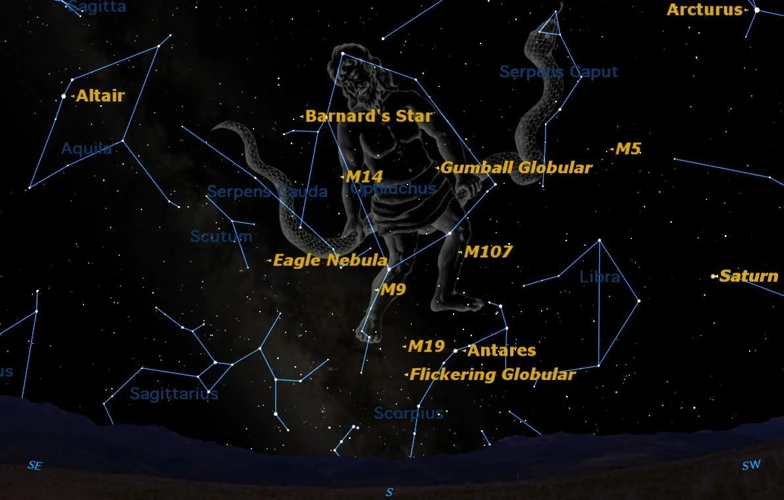
The study of constellations goes beyond the boundaries of individual civilizations and extends to a global perspective. Different cultures around the world have their own unique interpretations and systems of constellations, reflecting their diverse histories and beliefs.
Chinese and Indian Constellations
Chinese constellations have a rich and ancient history, with records dating back over 4,000 years. Unlike the Western system, many Chinese constellations are based on segments of the celestial equator rather than the ecliptic. They also include familiar animals like the dragon, tiger, and phoenix. These constellations played significant roles in Chinese astrology, mythology, and calendar making.
In India, ancient astronomers developed their own distinctive system of constellations known as Nakshatras. These are a series of 27 lunar asterisms, marking the path of the Moon across the sky over the course of a month. Each Nakshatra is associated with certain qualities, deities, and mythological stories. This system is still used in Indian astrology and remains deeply embedded in Indian culture.
Indigenous Constellations
Indigenous cultures around the world have also observed the stars and created their own unique constellations. For example, the Aboriginal people of Australia have a rich astronomical tradition that incorporates celestial objects into Dreamtime stories, which are part of their spiritual beliefs and creation narratives. The Inuit people of the Arctic have their own system of constellations, including figures like the polar bear and walrus, which were vital for navigation and tracking seasonal changes.
These diverse global perspectives on constellations highlight the interconnectedness of humanity and the creativity of different cultures in exploring and making sense of the cosmos. By studying these varied interpretations, we gain a deeper appreciation for the universal human fascination with the stars and the imaginative ways in which we have sought to understand and navigate our place in the universe.
Chinese and Indian Constellations
Chinese and Indian cultures have their own rich traditions of observing and interpreting the night sky, giving rise to unique constellations.
Chinese Constellations: In ancient China, the study of the stars was deeply intertwined with their philosophical, agricultural, and calendrical systems. The Chinese divided the sky into different regions and created constellations based on mythology, historical figures, and animals. One of the most famous Chinese constellations is the “Azure Dragon,” representing power and protection. Another significant constellation is the “Vermilion Bird,” symbolizing luck and joy.
Indian Constellations: In India, the study of stars and constellations was important in several fields, including astrology, religion, and navigation. Indian astronomers named their constellations after characters from Hindu mythology and associated them with various gods and goddesses. For example, the constellation “Arundhati” represents the wife of the sage Vashistha and is known for marital harmony.
Both Chinese and Indian constellations have regional variations, reflecting the diverse cultural beliefs and practices within these vast regions. They provide a unique perspective on the night sky, offering different interpretations and connections to celestial phenomena. Examining these constellations from Chinese and Indian cultures expands our understanding of the global significance of the stars.
Indigenous Constellations
Indigenous cultures around the world have developed their own unique constellations, often deeply intertwined with their folklore, spirituality, and natural surroundings. These indigenous constellations offer a diverse perspective on the night sky and reflect the deep connection between humans and their environment.
Native American Constellations: Native American tribes across North America have rich astronomical traditions. For example, the Lakota Sioux people have a constellation known as the White Buffalo Calf Woman, representing a sacred figure in their culture. The Pawnee tribe identifies the stars in the sky as various animals, with the Big Dipper representing a bear.
Australian Aboriginal Constellations: Aboriginal cultures in Australia have a profound understanding of the night sky, which forms a crucial part of their dreaming stories. The Yolngu people of Northern Australia identify constellations such as the Emu in the Sky, which is created by the dark spaces between the stars and represents an important ceremonial animal.
Māori Constellations: The Māori people of New Zealand have a rich tradition of celestial navigation and storytelling through the stars. Māori constellations, known as whetū, often depict important figures from their mythology. For example, Matariki, also known as the Pleiades star cluster, marks the start of the Māori New Year and signifies a time for reflection and remembrance.
These indigenous constellations not only provide a unique perspective on the night sky but also serve as a testament to the cultural diversity and interconnectedness of humanity. They remind us of the universal human fascination with the stars and the ways in which different cultures have formed their own narratives and relationships with the celestial realm. To learn more about the Ophiuchus constellation and tips for spotting this elusive zodiac constellation, click here (source).
Conclusion

In conclusion, the evolution of constellations over time is a testament to the intricate relationship between human culture, mythology, and scientific progress. Early human observations in civilizations like Ancient Mesopotamia, Ancient Egypt, and Ancient Greece laid the foundation for our understanding of the stars and their patterns. These observations were intertwined with religious beliefs, agricultural practices, and navigation methods. Throughout ancient mythology, constellations were utilized as a means to explain natural phenomena, narrate epic tales, and make sense of the world.
With the advent of modern astronomy, the influence of ancient observations persisted but also underwent substantial changes. The work of influential figures like Ptolemy and the establishment of the International Astronomical Union led to the standardization of constellation boundaries and the creation of new constellations. Scientific advancements allowed for a deeper understanding of celestial mechanics and the true nature of stars and galaxies.
Furthermore, the constellations we know today have been shaped by the precession of Earth’s axis, resulting in the gradual shift of their positions over time. Additionally, the Ophiuchus controversy challenged traditional zodiac constellations and sparked discussions about the boundaries and categorizations of constellations.
It is important to recognize the global perspectives on constellations as well. Chinese and Indian cultures have their own rich traditions and astronomical systems, each with their own set of constellations and mythologies. Indigenous cultures around the world also have their unique interpretations of the night sky, often based on their local environment and celestial landmarks.
In essence, the evolution of constellations is an ever-evolving journey of human exploration, scientific discovery, and cultural diversity. As we continue to gaze at the stars, our understanding and appreciation of these celestial wonders will undoubtedly continue to evolve, inspiring generations to come.
Frequently Asked Questions

Early civilizations used the constellations as a means of navigation. By observing the position of specific constellations in the night sky, they could determine their direction and navigate through unfamiliar territory.
2. Were all constellations recognized by ancient societies?
No, different ancient societies recognized different constellations based on their cultural beliefs and mythology. While some constellations were commonly recognized across civilizations, others were unique to specific cultures.
3. Did ancient astronomers discover the movement of planets?
Ancient astronomers, such as the Greeks, made important observations and theories about planetary motion. They hypothesized that planets, including Mercury, Venus, Mars, Jupiter, and Saturn, moved in relation to the fixed stars.
4. How did ancient civilizations explain the origin of constellations?
Ancient civilizations often connected constellations to their myths and legends. They attributed the origin of constellations to gods, heroes, and animals, providing symbolic and storytelling significance.
5. Were constellations only important for religious or mythological reasons?
No, constellations held practical importance as well. Early civilizations relied on the stars for agricultural purposes, determining seasons, and tracking time.
6. Did ancient societies have a unified system for naming constellations?
No, there was no unified system for naming constellations among ancient societies. Different cultures had their own naming conventions and stories associated with the stars.
7. How did ancient astronomers make accurate measurements without modern instruments?
Ancient astronomers relied on simple tools like astrolabes and quadrants to measure angles and distances. They also used careful observation and recorded their findings over long periods to make accurate calculations.
8. What role did astrology play in early civilizations’ understanding of constellations?
Astrology played a significant role in the early civilizations’ understanding of constellations. They believed that the positions of celestial bodies had a direct influence on human affairs and used astrology for predictions and guidance.
9. Did ancient civilizations have knowledge of comets and asteroids?
Ancient civilizations observed comets and recorded their appearance in historical documents. However, they did not possess the same understanding of comets and asteroids as we do today.
10. How did the cultural diversity of ancient civilizations influence their perception of constellations?
The cultural diversity of ancient civilizations led to variations in the perception and interpretation of constellations. Each civilization infused their unique perspectives, mythology, and symbolism into the celestial patterns they observed.
References
- How are constellations intact if the stars are rotating around …
- Are The Constellations Always Going To Look The Same …
Frequently Asked Questions

Can constellations be seen from all parts of the world?
No, different constellations can be seen depending on the observer’s location on Earth. Constellations in the northern hemisphere may not be visible in the southern hemisphere, and vice versa.
Do constellations have the same meaning in all cultures?
No, constellations can have different meanings and interpretations across different cultures. They often reflect the myths, beliefs, and traditions specific to each culture.
What is the significance of constellations in ancient mythology?
Constellations played a significant role in ancient mythology as they were often associated with gods, goddesses, and heroic figures who were believed to have been placed in the night sky as celestial symbols.
How have constellations changed over time?
Constellations have evolved over time due to various factors such as cultural shifts, scientific discoveries, and advancements in our understanding of the universe. The boundaries and names of constellations have been revised and updated as new knowledge emerges.
What is the role of the International Astronomical Union in defining constellations?
The International Astronomical Union (IAU) is responsible for officially defining the boundaries and names of constellations. Their work ensures consistency and accuracy in the identification of celestial objects.
What is the Ophiuchus controversy?
The Ophiuchus controversy refers to the debate surrounding the inclusion of Ophiuchus, a “new” constellation, in the zodiac. Some astronomers propose that Ophiuchus should be recognized as a 13th zodiac sign, which would shift the dates for the existing zodiac signs.
Are there constellations specific to Chinese and Indian cultures?
Yes, Chinese and Indian cultures have their own unique constellations. Chinese constellations are based on traditional Chinese mythology, while Indian constellations are derived from ancient Hindu scriptures.
Do different cultures recognize the same constellations?
While some constellations are recognized across multiple cultures, there are also many unique constellations that are specific to certain cultures. The variation in constellations reflects the diversity of human experiences and beliefs.
What is the precession of Earth’s axis and its impact on constellations?
The precession of Earth’s axis refers to the gradual shift in the orientation of Earth’s axis of rotation. This movement causes the position of the stars and constellations to change slowly over time. As a result, the constellations we see today are not exactly the same as those observed by ancient civilizations.
Are there indigenous constellations recognized by native cultures?
Yes, many indigenous cultures have their own constellations that are deeply connected to their traditions, history, and environment. These constellations often have unique stories and meanings specific to each indigenous culture.







